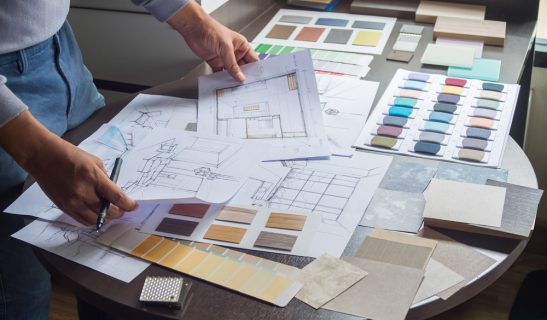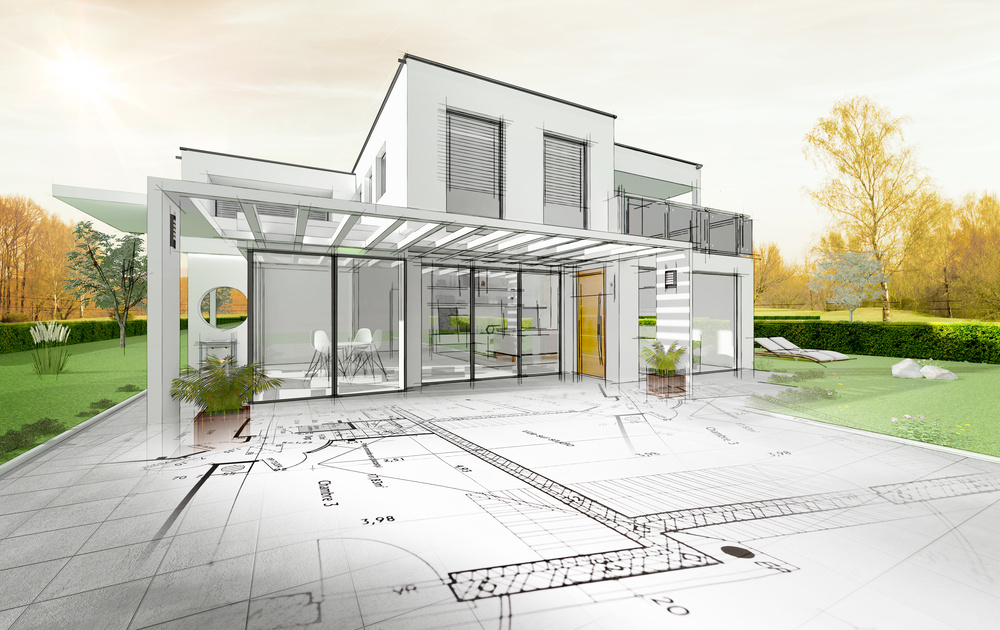Building the home of your dreams is one of the milestones most people want to achieve. Essentially, with a custom home, you get to decide on the layout and aesthetics of your future abode instead of settling with an already built house. For instance, you can add a personal touch and incorporate your preferences and non-negotiable requirements when brainstorming the design of your home.
While this can be an exciting project to take on, it could also be overwhelming, considering the many factors you need to consider. With that in mind, here’s a guide to building the custom home of your dreams to help you get started:
1. Determine Your Budget
Setting a budget is essential to building your custom home since it’ll affect every decision you make. By knowing how much your finances allow you to spend, you can be guided in finalizing the design of your home and even the building materials to be purchased.
It can help you weigh the needs and ones you might have to stick to or remove. You’ll also know which to prioritize since you know how much it could cost to add the ones on your wish list that may not be necessary.
And to help you derive an estimate, working with a custom home builder during the initial stages can be helpful. You can look for reputable contractors near you and check their websites, such as Jabconst.com, to set up a consultation with them.
You can ask them for the numbers on how much things would cost, but generally, here are some of the things you can expect to spend money on:
- Driveway and deck
- Heating, Ventilation, and Air Conditioning (HVAC), plumbing, and electric
- Interior and exterior finishes
- Framing
- Foundation
- Site work
- Inspections
- Building permit fees
- Professional fees of designers and contractors
By having an idea of the cost of building your custom home, you can be in a better position to set and prepare a budget, stick to it, design your home economically, and save some for unexpected expenses.
2. Create A Design Brief
Creating a brief is necessary to have an evolving document throughout the project. Essentially, a brief can be your go-to reference. You can use this to remember the ‘why’ you want a custom home and what should be in it since you’ve set all the essential requirements and non-negotiables.
With such, here are the things you need to include in your custom home’s design brief:
-
Budget
It’s not enough that you’re aware of how much you can spend on your custom home. Include your budget in your design brief because it’s vital to let your design team know how much you can afford. By knowing your budget, they’ll also be able to determine a suitable design and recommend building materials to fit your budget.
-
Home Efficiency Features
These days, homeowners want their houses to become more energy-efficient. Some reasons for such are minimizing their utility bills and increasing the value of their property, which can be helpful if you’re planning to sell your house in the future.
You can do so by installing solar panels, smart home devices, and other home features that can make your home consume less power and be more sustainable.
-
Design Style And Preference
Include a description of the architectural design you want for your home. This can be your guide as you and your design team finalize your home’s details. For instance, do you prefer a modern home, or are you leaning towards having a traditional-style home? What color scheme are you looking to have in your home?
You could also include specific design requirements you wish to be incorporated. For example, if your property is near the ocean and you want to maximize the seascape, indicate in your brief that you want to make your bedroom or living room face such a view.
-
Building Flow And Space Planning
This refers to the layout of your home’s interiors. Essentially, you’d want your home’s space to be aligned with your family’s lifestyle. For example, if you enjoy entertaining guests or spending time with your family while cooking, it would be ideal to go for an open-plan living and dining room connected to the kitchen.
Or perhaps, if you enjoy BBQs with loved ones, having a covered seating area in the backyard with a BBQ and gas fire pit can be added to your home’s wish list.
-
Room Information
This covers the room requirements for your home, such as the number of bedrooms. Moreover, you could also list amenities you would love to have, such as a home office, gym, or entertainment room. You could also indicate the ideal size you want for each room. For example, you can take note of which bedrooms will have their own bathroom or walk-in closet.
-
Timetable
This refers to the general schedule of making your dream home come true and when you expect it to be done. By indicating the target completion date and different milestones in your brief, your team can weigh if your timeline is attainable. If not, they can help you set a realistic date since building a quality home is more important than hurrying it up.
3. Hire Design And Construction Professionals

When building your custom home, working with architects and interior designers can be helpful. While you can take this task upon yourself and get inspiration from design magazines and online resources, professionals can make the process more efficient and seamless. For instance, they can help you save time conducting trial and error exploring design styles. Moreover, with their skills and expertise in the trade, they can best help you with the functionality and aesthetics of your home while ensuring code compliance.
Next is to choose the best builder near you. And considering the role your contractor plays in building your dream home, ensure you work with reputable professionals in the industry. Start by searching online or asking for referrals from friends or family. You may even want to consider referrals from your real estate agent, as they’ll likely have connections with builders.
To help you find the right professionals to work with, here are some pointers you can keep in mind:
- Dig deep into your research: Don’t settle with the first designer and builder you come across with. A custom dream home is a significant investment, so you’d want to work with people that can best bring your dream to life. Take the time to research more about the professionals’ information online, check their website, and learn more about their services.
- Check their portfolio: Look into their portfolio and past projects as well. This can give you an idea about the quality and type of services they offer. For instance, for design professionals, looking at their portfolios gives you an insight into what types of designs or styles they usually do. So, suppose you want a contemporary home. Go for someone who has expertise in that style.
- Read client reviews: As you are looking for a team to help you build your dream home, don’t skip reading client reviews. Doing so lets you find out what their previous clients say about them. You may also uncover issues related to them. With that, it’s best to do in-depth research about them to avoid working with the ones who may not provide quality service.
- Ask questions: Once you’ve narrowed down your list to two or three candidates, it’s time to consult with them. You can ask for a face-to-face or online consultation to ask them questions or any clarifications you may have regarding their quotation and methodology, among other things.
4. Be Detail Oriented
All has been set, and your team is ready to start the building process. While it may seem like the time to relax, you shouldn’t do so until the construction process is finished. Instead, what you need is to be as involved and hands-on throughout the process, especially since it’s your custom dream home.
As much as possible, you’d want to be on top of everything to ensure that things are running smoothly. You’d also want to make sure your preferences are being implemented. And more importantly, to check whether or not the team is behind the target timeline and if you’re still within your budget.
However, this doesn’t mean you should be on the construction site daily. You can still be as involved in the project as you want by doing the following:
- Compare progress using your brief, design, and other plans to ensure that construction meets requirements. When you notice that the builder didn’t follow specifications, let them know so they can take responsibility for it.
- Track spending by checking invoices.
- Communicate regularly with the designers and builders to learn where they are and what issues may be ensuing.
Conclusion
Thorough preparation for building the custom home of your dreams is vital to ensure a seamless and efficient process. And as a good start, partnering with reputable design and construction professionals and implementing the guide above can help you turn your custom dream home into a reality.

